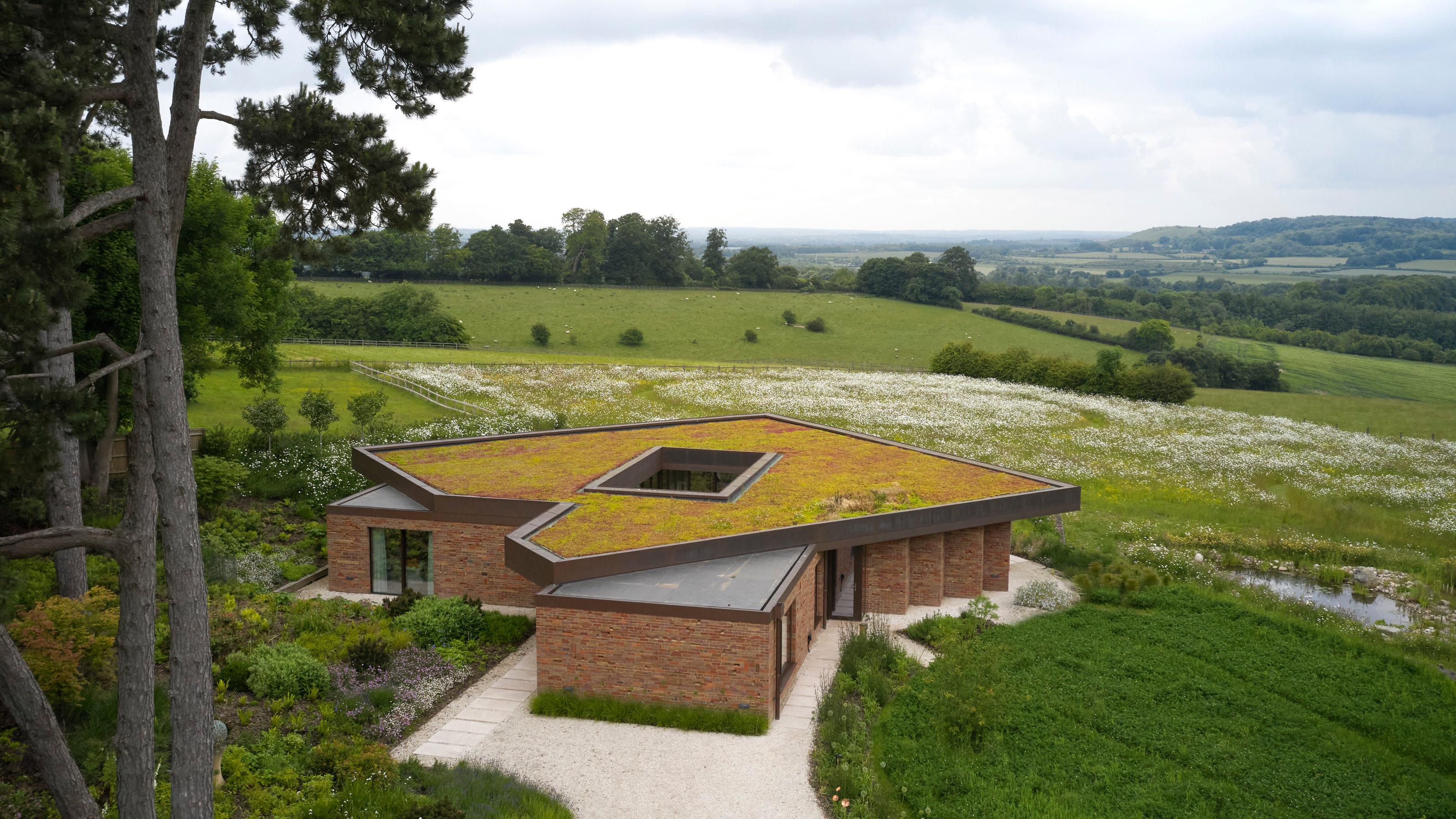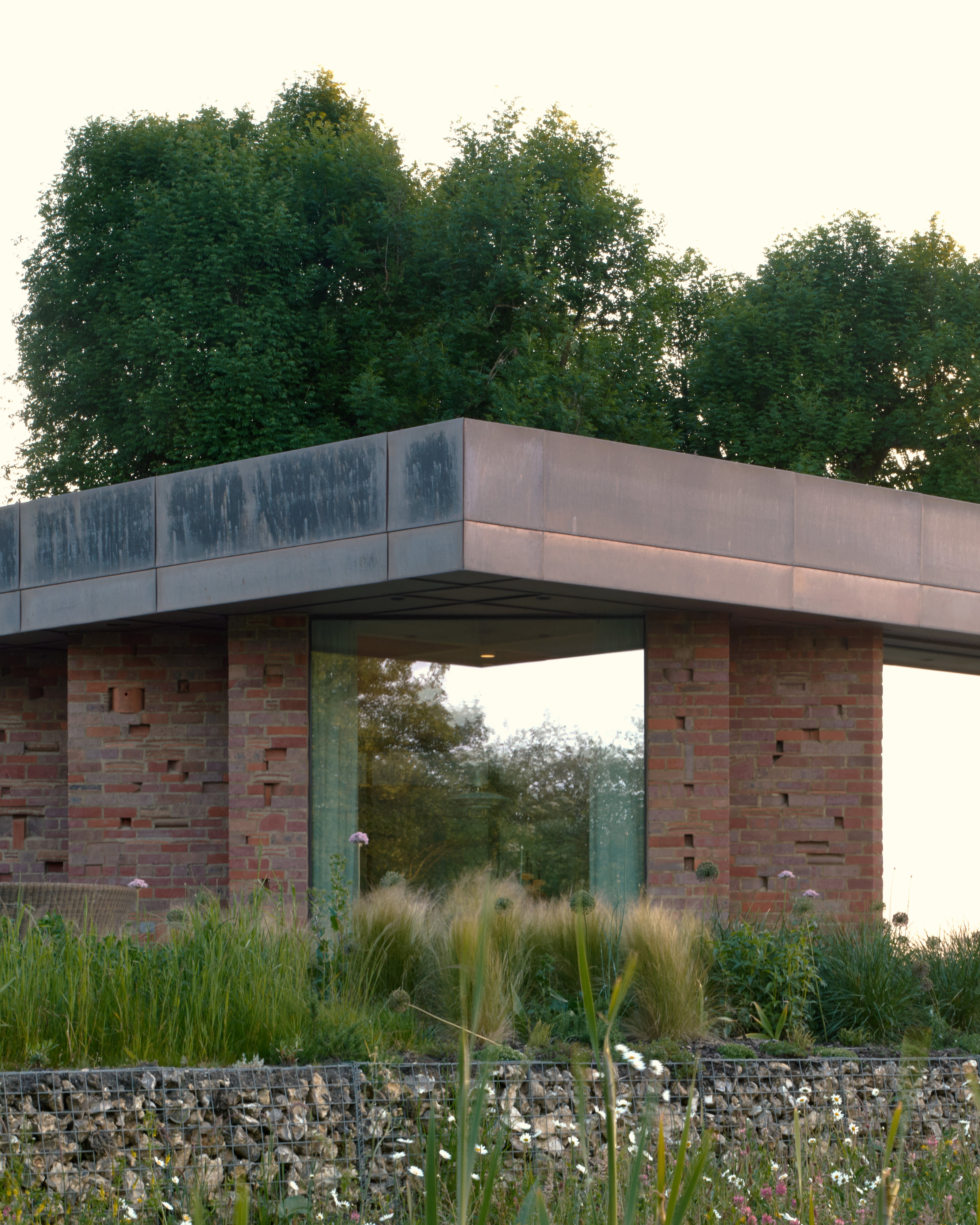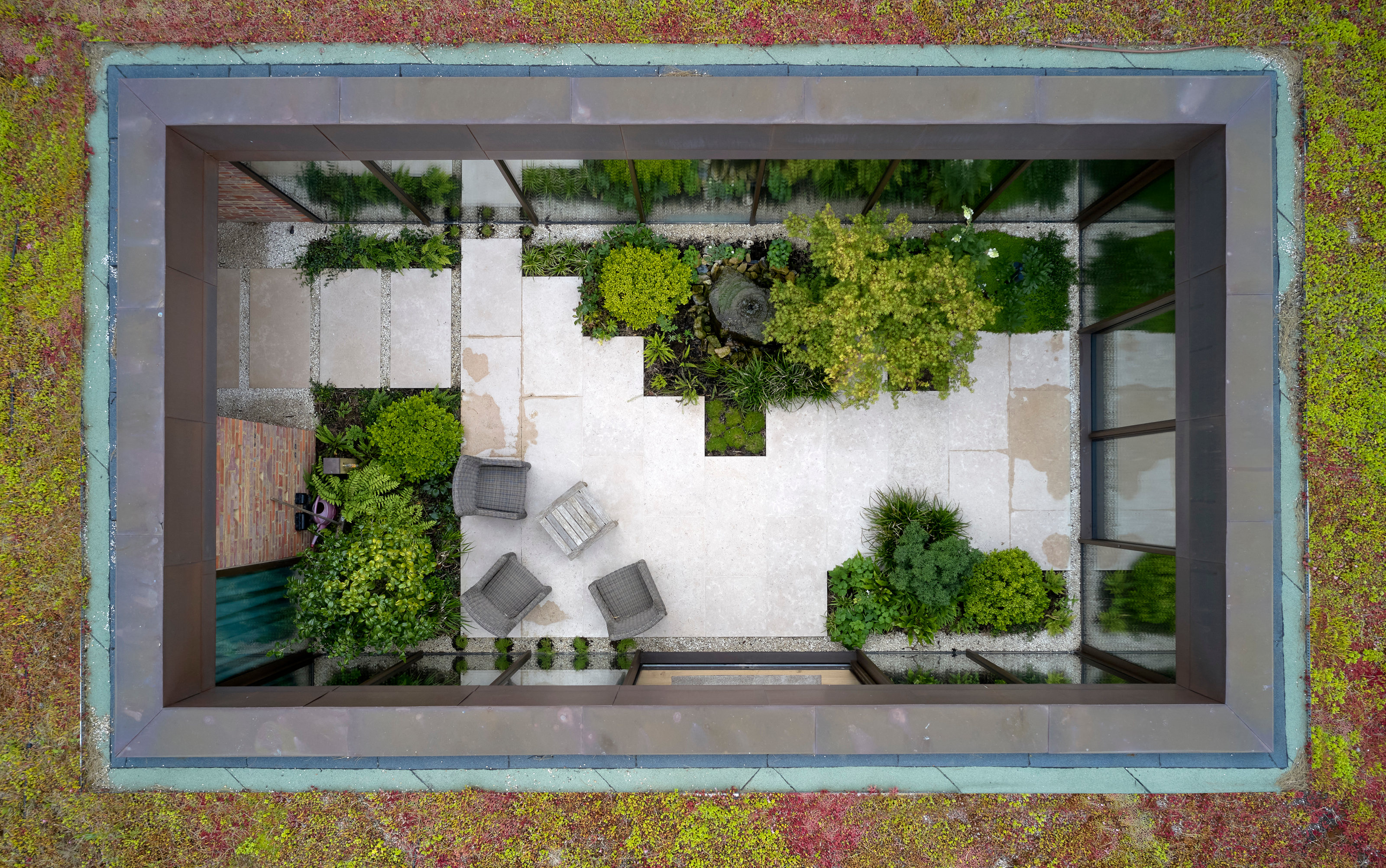Foxglove House blends bucolic serenity with simple geometry
Kirkland Fraser Moor has created Foxglove House, an elegant low-energy home in the heart of the greenbelt, with traditional materials, elegant details and far-reaching views

Building a new private home, like Foxglove House, in the English countryside is not without its pitfalls. While property developers can get away with carpeting greenfield sites with drab identikit ‘executive’ housing, individual houses are subjected to extreme levels of scrutiny from planners, neighbours and conservation bodies.

The new house replaces an old stable building
A visit to Foxglove House
Perhaps this is no bad thing, because when it all comes together, the result is spectacular. Recent featured projects by Sandy Rendel Architects and Studio Bark highlight the meticulous process of slotting a new structure into an existing eco-system, and the amount of thought and planning that goes into every facet of their design, construction and day-to-day running.
Foxglove House is another such project. Known informally among architects as ‘Para 80 houses’, these ventures address a specific planning clause that allows new-build single-family houses in the countryside if, among other things, they represent ‘outstanding design’. The clause specifies these houses must reflect ‘the highest standards in architecture and would help to raise standards of design more generally in rural areas’ and ‘significantly enhance [their] immediate setting and [are] sensitive to the defining characteristics of the local area’.

The house is entered via a courtyard behind a bespoke new gate
Architects Kirkland Fraser Moor know these requirements all too well. An earlier project, Ashraya in the Chiltern Hills, wove spectacular, low-energy design into a site in such a way that no neighbour could possibly object. Throw in the enhanced biodiversity brought to the site by careful and sensitive landscaping, and you have all the necessary ingredients to build new without any chance of creating bad blood.
Foxglove House follows a similar playbook. The four-bedroom house replaces an existing stable block. However, in order to effectively quadruple the built area to 285 sq m, the practice, which has offices in Hertfordshire and London, worked hard to minimise its impact on the views across this designated Area of Outstanding Natural Beauty.

Looking from the entrance back into the internal courtyard
Foxglove House is a single-storey structure arranged around a courtyard, a typology that the firm notes is not particularly common to the UK. The main living areas and bedroom corridor all look onto the inner rectangular courtyard, which is set at a 45-degree angle to the square roof structure.
This latter component follows the building line of the original stables and is formed from a lattice of cross-laminated timber (CLT) beams. The rooms, however, are set an angle to make the most of the north views across the valley towards the nearby Ashridge Estate, with the courtyard creating south-facing solar gain for north-facing rooms.
Receive our daily digest of inspiration, escapism and design stories from around the world direct to your inbox.

The new house is set amid rewilded meadows
This solution is neatly expressed in the plan view, with stepped brick walls tucked beneath the overhanging roof and only two bedrooms peeping out from underneath the CLT structure. In addition to the green roof, all external cladding is either recycled copper or local waste brick from a nearby builders’ yard.

The recycled brick walls create visual variety and a haven for wildlife
As a result, the façade contains a rich variety of form, colour and pattern, giving the impression of a longstanding structure within the landscape, as well as providing a haven for wildlife. Interior walls are finished in natural clay plaster.

The copper-clad CLT roof structure overhangs the zigzag arrangement of walls
These zigzag walls add depth and shadow to the façade, further helping the house blend into the hillside and the stand of mature pine trees behind it. The inner courtyard also serves as the entrance into the house, as well as a sheltered spot for plants. The house is substantially powered by a new solar array, mounted on the garage and on nearby land. According to the architects, it provides ‘85-100 per cent of all energy needs, [including powering] two EVs’.

Foxlglove House is nestled within the landscape
The surrounding gardens, by Bowles & Wyre and James Smith, combine a sensitive, natural style of planting with rewilded meadows, all of which are intended to increase the biodiversity of the site, particularly local threatened bird species.
A project such as this requires the coordination of many different specialists, from landscape consultants to environmental engineers and local suppliers and craftspeople. Preserving views and open spaces while enhancing the natural realm is obviously worth the effort. One can only hope these careful approaches will filter down to the mass market.

Aerial view of the interior courtyard at Kirkland Fraser Moor's Foxglove House
Jonathan Bell has written for Wallpaper* magazine since 1999, covering everything from architecture and transport design to books, tech and graphic design. He is now the magazine’s Transport and Technology Editor. Jonathan has written and edited 15 books, including Concept Car Design, 21st Century House, and The New Modern House. He is also the host of Wallpaper’s first podcast.
-
 Modernism for sale: a Norman Jaffe-designed icon on Shelter Island hits the market
Modernism for sale: a Norman Jaffe-designed icon on Shelter Island hits the marketThe Osofsky House epitomised the glamour of high-end 70s modernism on Long Island. Now updated and refurbished, it’s back on the market for the first time in over two decades
-
 Discover Locus and its ‘eco-localism' - an alternative way of thinking about architecture
Discover Locus and its ‘eco-localism' - an alternative way of thinking about architectureLocus, an architecture firm in Mexico City, has a portfolio of projects which share an attitude rather than an obvious visual language
-
 MoMA celebrates African portraiture in a far-reaching exhibition
MoMA celebrates African portraiture in a far-reaching exhibitionIn 'Ideas of Africa: Portraiture and Political Imagination' at MoMA, New York, studies African creativity in photography in front of and behind the camera
-
 Step inside this perfectly pitched stone cottage in the Scottish Highlands
Step inside this perfectly pitched stone cottage in the Scottish HighlandsA stone cottage transformed by award-winning Glasgow-based practice Loader Monteith reimagines an old dwelling near Inverness into a cosy contemporary home
-
 This curved brick home by Flawk blends quiet sophistication and playful details
This curved brick home by Flawk blends quiet sophistication and playful detailsDistilling developer Flawk’s belief that architecture can be joyful, precise and human, Runda brings a curving, sculptural form to a quiet corner of north London
-
 A compact Scottish home is a 'sunny place,' nestled into its thriving orchard setting
A compact Scottish home is a 'sunny place,' nestled into its thriving orchard settingGrianan (Gaelic for 'sunny place') is a single-storey Scottish home by Cameron Webster Architects set in rural Stirlingshire
-
 Porthmadog House mines the rich seam of Wales’ industrial past at the Dwyryd estuary
Porthmadog House mines the rich seam of Wales’ industrial past at the Dwyryd estuaryStröm Architects’ Porthmadog House, a slate and Corten steel seaside retreat in north Wales, reinterprets the area’s mining and ironworking heritage
-
 Arbour House is a north London home that lies low but punches high
Arbour House is a north London home that lies low but punches highArbour House by Andrei Saltykov is a low-lying Crouch End home with a striking roof structure that sets it apart
-
 A former agricultural building is transformed into a minimal rural home by Bindloss Dawes
A former agricultural building is transformed into a minimal rural home by Bindloss DawesZero-carbon design meets adaptive re-use in the Tractor Shed, a stripped-back house in a country village by Somerset architects Bindloss Dawes
-
 RIBA House of the Year 2025 is a ‘rare mixture of sensitivity and boldness’
RIBA House of the Year 2025 is a ‘rare mixture of sensitivity and boldness’Topping the list of seven shortlisted homes, Izat Arundell’s Hebridean self-build – named Caochan na Creige – is announced as the RIBA House of the Year 2025
-
 In addition to brutalist buildings, Alison Smithson designed some of the most creative Christmas cards we've seen
In addition to brutalist buildings, Alison Smithson designed some of the most creative Christmas cards we've seenThe architect’s collection of season’s greetings is on show at the Roca London Gallery, just in time for the holidays